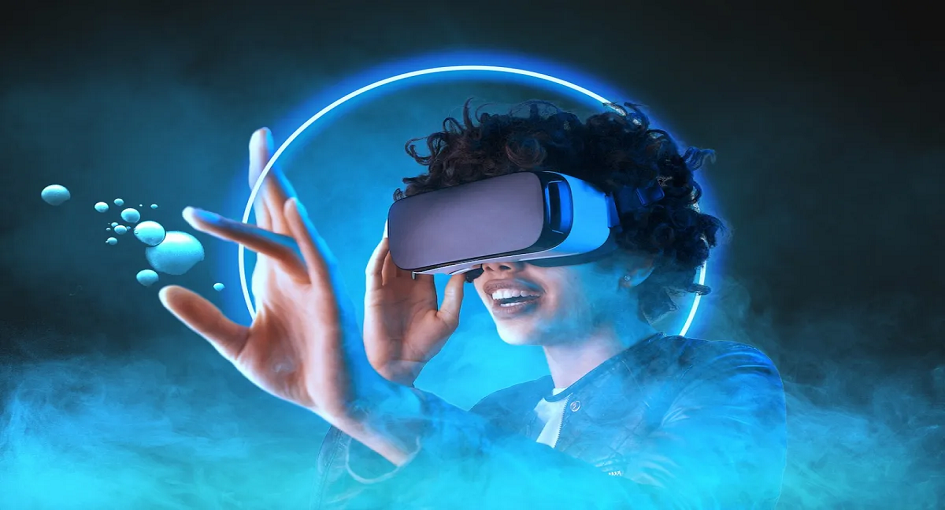
The concept of the metaverse has captured the imagination of technology enthusiasts, gamers, and futurists alike. It represents a virtual, interconnected universe where people can interact, socialize, work, and play in a seamless digital environment. But how does the metaverse work? This article delves into the details of this fascinating virtual realm, exploring its technology, infrastructure, and the various elements that make it a reality.
The virtual reality universe, often described as the next frontier of the internet, is a vast, immersive, and persistent digital space where users can engage with many experiences. It goes beyond simple virtual reality, encompassing augmented reality and mixed reality, creating a cohesive, shared environment where people can interact as if they were physically present.
The virtual reality universe relies on a complex amalgamation of cutting-edge technologies. Some of the key foundations include:
A. Virtual Reality (VR): VR headsets and devices provide users with immersive sensory experiences, making them feel present in the digital world.
B. Augmented Reality (AR): AR overlays digital information onto the physical world, enhancing real-world experiences with digital content.
C. Mixed Reality (MR): MR combines aspects of both VR and AR, allowing digital objects to interact with and respond to the real environment.
At the heart of the virtual reality universe is spatial computing, which enables the creation of a shared virtual space where users’ movements and interactions are seamlessly integrated. This technology employs 3D modeling, object recognition, and spatial mapping to understand the real world and blend it with the virtual.
For the virtual reality universe to function, a robust and high-speed internet infrastructure is essential. Users need low-latency connections to ensure smooth interactions and real-time synchronization across devices. 5G and future advancements in networking technology are crucial for enabling this level of connectivity.
The virtual reality universe is a vast and diverse digital realm, and creating its content requires sophisticated tools and platforms. Game engines like Unreal Engine and Unity play a pivotal role in world-building, allowing developers to design, render, and populate virtual spaces. User-generated content also contributes significantly, as individuals can build, customize, and share their virtual environments.
One of the virtual reality universe’s biggest challenges is ensuring compatibility and interoperability across various platforms, devices, and digital worlds. Standards and protocols are crucial to enable seamless transitions between different virtual reality universe spaces and experiences.
AI is instrumental in the virtual reality universe, enhancing the user experience by enabling realistic interactions with NPCs (non-player characters) and avatars. AI also assists in content moderation, helping maintain safe and respectful digital environments.
Users in the virtual reality universe create digital representations of themselves known as avatars. These avatars can be customized to reflect one’s appearance and personality. Digital identity management is essential for security and privacy within the virtual reality universe.
The virtual reality universe has its own economy, driven by digital currencies and assets. NFTs (Non-Fungible Tokens) play a significant role, allowing users to own and trade unique digital items and properties. Cryptocurrencies like Ethereum are often used for transactions within the virtual reality universe.
Social interactions are a core aspect of the virtual reality universe. Users can engage with others through voice and text chat, as well as interactive gestures and actions. Virtual gatherings, events, and social hubs are common, providing opportunities for people to meet and connect in a digital space.
Ensuring privacy and security in the virtual reality universe is critical. Users need protection against cyber threats, harassment, and unauthorized data collection. Technologies such as blockchain can enhance security and maintain control over personal data.
While the virtual reality universe offers extensive opportunities for gaming, it goes beyond entertainment. It can be used for education, training, remote work, healthcare, and more. The versatility of the virtual reality universe makes it a transformative technology with vast potential.
Decentralization is a fundamental principle in the virtual reality universe, aiming to reduce the control of a single entity over the digital space. Blockchain technology plays a crucial role in achieving this by providing a decentralized ledger for transactions, digital asset ownership, and governance. Smart contracts, powered by blockchain, enable trustless and transparent interactions within the virtual reality universe, ensuring that users have more control over their digital assets and experiences.
The virtual reality universe is still in its early stages, and its development is an ongoing process. As technology advances, we can expect the virtual reality universe to become more immersive, realistic, and inclusive. With innovations in haptic feedback, brain-computer interfaces, and AI-driven environments, the virtual reality universe is likely to become an even more integral part of our lives, potentially revolutionizing industries such as education, healthcare, and entertainment. As this digital frontier continues to evolve, it will be exciting to see the endless possibilities it unfolds for society.
In conclusion, the metaverse represents a groundbreaking evolution in how we interact with digital environments and each other. With its technological foundations, spatial computing, world-building tools, and interconnected infrastructure, the virtual reality universe is poised to redefine the way we live, work, and play in the digital age. As the virtual reality universe continues to develop, it will be fascinating to see how it shapes our future and opens up new possibilities for human interaction and innovation.